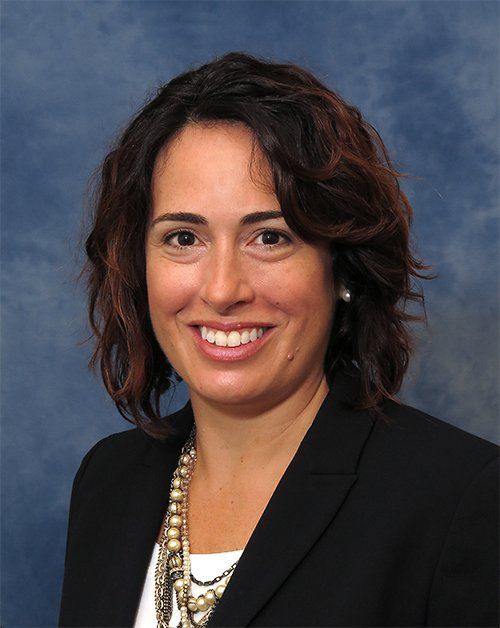Six things to know about CMS' new bundled payment model
CMS unveiled a voluntary episode bundled payment model, Bundled Payments for Care Improvement Advanced (BPCI Advanced). Here’s six things experts want you to know
CMS has set in motion a voluntary episode bundled payment model, Bundled Payments for Care Improvement Advanced (BPCI Advanced), that will test a new iteration of bundled payments for 32 clinical episodes and aim to align incentives among participating providers for reducing expenditures and improving quality of care for Medicare beneficiaries.
The model will qualify providers for additional incentives under the 2015 Medicare Access and CHIP Reauthorization Act (MACRA).

Richards
“At its core, BPCI Advanced strives to coordinate providers across the continuum to reduce costs and improve quality of care for Medicare beneficiaries,” says Clay Richards, president & CEO of naviHealth, one of the first companies to engage with the current BPCI initiative.
“CMS made clear in its announcement that it will continue its goal of tying payment to performance and focus on the quality of care rather than quantity of services furnished,” Richards says.
“BPCI Advanced …. will allow participating providers to take steps toward value-based care,” says Darcie Hurteau, senior director of informatics, DataGen, a healthcare data analytics and policy firm.
There are six things experts want you to know about BPCI Advanced:
1. BPCI Advanced isn't a huge change from the original BPCI model, which is a good thing. “CMS made adjustments to ensure the acute care hospitals and physician group practices can participate in 32 core episode groups-29 inpatient and three outpatient-versus 48,” Richards says. “All episodes are based on 90 days post-hospitalization, meaning providers are responsible for patients for the same period of time across all episodes. CMS used data to focus on what works best for participating organizations to improve the program in this next stage.”
2. There’s still some things we don’t know. “Although we have some details about BPCI Advanced-that there will be seven quality measures, that there are three outpatient episodes-we are still missing some information,” Hurteau says.
Currently, it’s undetermined how episodes will be constructed or how the quality scores will be calculated, for example, according to Hurteau. “Practices who are thinking about participating should take some important first steps: request your data from CMS-this doesn’t obligate you to participate; evaluate your risks and opportunities; and then assess the strategic buy-in from the rest of your organization’s stakeholders.”

Hurteau
3. There’s opportunities for additional savings. BPCI Advanced will also be an advanced alternative payment model (APM) that allows physicians to qualify for financial incentives through the new Quality Payment Program (created to comply with MACRA), according to Richards.
“BPCI Advanced has many quality measures that participants will be measured against,” he says. “Performance on these quality metrics will have a direct effect on payments in BPCI Advanced. High-performing providers may earn significant financial benefits.”
4. There’s a huge benefit to There’s a huge benefit to partnering with a convener, which CMS included in the new model. “Acute hospitals, health systems, and other providers can partner with an organization to share financial risk and provide clinical support technology and management services,” Richards says. “It alleviates a huge burden on these providers and allows the focus to be on the patient, rather than the administrative duties.”
5. Participants currently in Comprehensive Care for Joint Replacement (CJR) program cannot participate for those diagnosis-related groups (DRGs) in BPCI Advanced. “Any care episode that a provider is already doing under CJR, cannot also be used for BPCI Advanced,” says Hurteau. “This prevents duplication of payment-you can’t get reimbursed for a bundled episode of care under two different programs.”
6. The majority of the clinical care episodes covered by BPCI Advanced were covered by the original BPCI, with the exception of three outpatient surgical procedures. “The three outpatient episodes included in BPCI Advanced were not part of the original BPCI program, but are new care episodes that we haven’t seen included in any bundled care program before,” Hurteau. says. “It makes sense that CMS made two out of the three outpatient procedures cardiac bundles, since a significant amount of those procedures are performed on an outpatient basis.”
Next: What does the future hold?
Looking ahead
“Bundled payments will see even more successful outcomes and increased cost savings,” says Richards. “The current BPCI initiative has proven success, and we anticipate more providers will participate in BPCI Advanced.”
According to Richards, naviHealth alone manages $1.1 billion annually throughout all episodes of care. As a convener in the BPCI program, the company helps more than 50 hospitals and health systems reduce unnecessary costs by 8.1% and it manages approximately 40,000 episodes of care. naviHealth saves an average of $2,088 per episode of care, resulting in total annual gross savings of more than $83 million.
“The transition from BPCI to BPCI Advanced will be seamless as CMS plans to provide additional information in May, allowing providers to start in October with no gap in participation,” Richards says. “Many providers have been making the shift already thanks to commercial health plans pushing for value-based arrangements, and other organizations now have incentives to join the movement.”
The continuation of bundled payments is a positive one, agrees Hurteau. “The voluntary nature will allow practices to make sure they’re ready before participating in a bundled payment model, and will ensure they get the most out of participation,” she says.
Hurteau also expects to see significant interest in the program as the industry is becoming more comfortable with taking on risk. “Since BPCI Advanced qualifies as and Advanced APM under MACRA many more practices will be motivated to evaluate this model as a positive opportunity,” she says.
In this episode of the "Meet the Board" podcast series, Briana Contreras, Managed Healthcare Executive editor, speaks with Ateev Mehrotra, a member of the MHE editorial advisory board and a professor of healthcare policy and medicine at Harvard Medical School. Mehtrotra is also a hospitalist at the Beth Israel Deaconess Medical Center in Boston. In the discussion, Contreras gets to know Mehrotra more on a personal level and picks his brain on some of his research interests including telehealth, alternative payment models and price transparency.
Listen
Doing More and Saving More with Primary in Home Care
September 1st 2021In this week’s episode of Tuning In to the C-Suite podcast, MHE Associate Editor Briana Contreras interviewed VillageMD’s Senior Medical Director of Village Medical at Home, Dr. Tom Cornwell. Dr. Cornwell discussed the main benefits of primary care at home, which includes the benefit of cost savings for patients, maintaining control of hospital readmissions and others. Dr. Cornwell also noted what has changed in the industry of at-home care and if there has been interest from payers like insurance companies and medicare in the service.
Listen